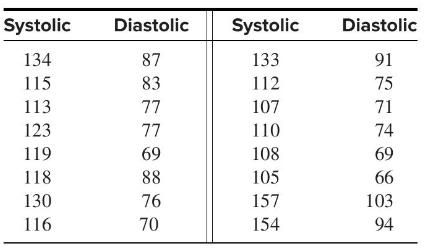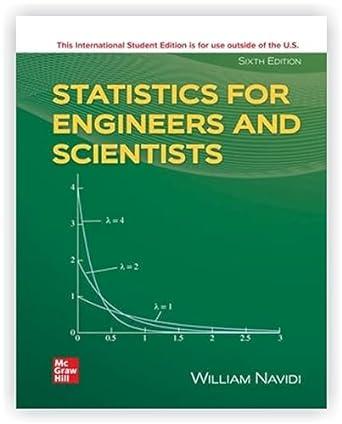A blood pressure measurement consists of two numbers: the systolic pressure, which is the maximum pressure taken
Question:
A blood pressure measurement consists of two numbers: the systolic pressure, which is the maximum pressure taken when the heart is contracting, and the diastolic pressure, which is the minimum pressure taken at the beginning of the heartbeat. Blood pressures were measured, in \(\mathrm{mmHg}\), for a sample of 16 adults. The following table presents the results.

a. Construct a scatterplot of diastolic pressure \((y)\) versus systolic pressure \((x)\). Verify that a linear model is appropriate.
b. Compute the least-squares line for predicting the diastolic pressure from the systolic pressure.
c. If the systolic pressures of two patients differ by \(10 \mathrm{mmHg}\), by how much do you predict their diastolic pressures will differ?
d. Predict the diastolic pressure for a patient whose systolic pressure is \(125 \mathrm{mmHg}\).
Step by Step Answer:






